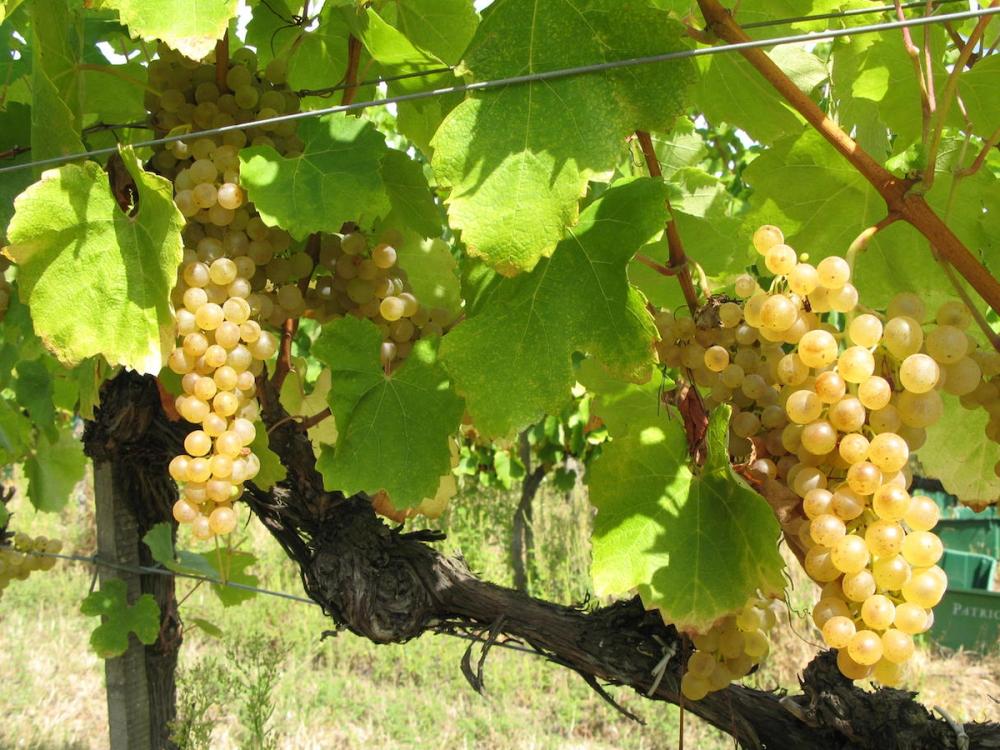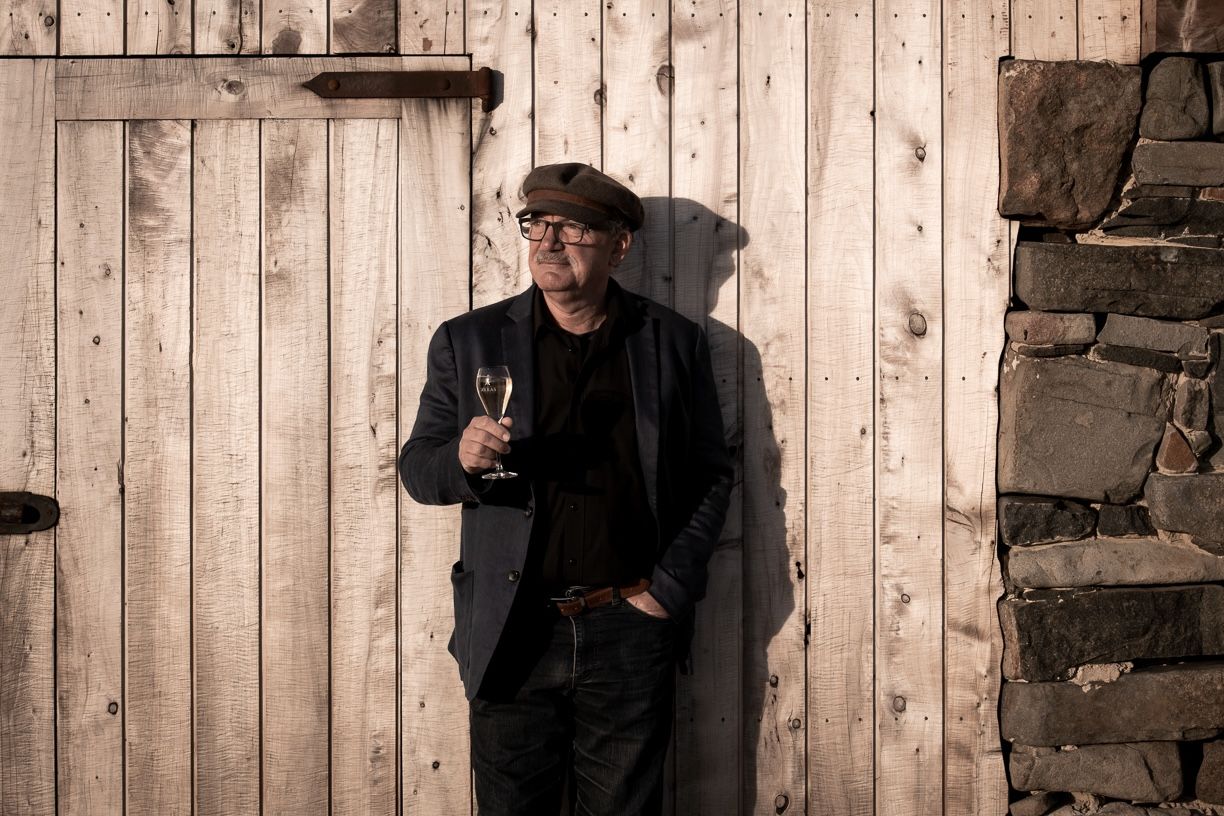“Hárslevelű is an amazing grape and can be just as high quality as Furmint,” says Sarolta Bárdos owner of Tokaj-Nobilis.
The Hárslevelű grape, which is Furmint crossed with Tzimlyansky Belyi, has often languished in the shadow of its more famous parent. The reason for this is partly because there’s less grown – making up about 20% of the region’s production in 2020; Hárslevelű often goes into blends to make Furmint ‘more friendly’; and, let’s face it, because it is simply harder to pronounce and market than Furmint.

Hárslevelű – Furmint crossed with Tzimlyansky Belyi
Making Hárslevelű site specific
Kata Zsirai from Zsirai Winery explains that 30% of her vineyard is Hárslevelű.
“I believe in the grape and I think its future should be supporting Furmint, not competing with it. It can be a new style for Tokaj and can show the importance of terroir too,” she says.
The region’s two most important grapes both have advantages and disadvantages: Zsirai reckons Hárslevelű can be smoother, more aromatic, less phenolic and less bitter than Furmint but adds that you have to be careful with yields and the site. “We have Hárslevelű vines in Szent Tamás and Betsek vineyards, and we usually make 100% varietal wines. Both are very special and can reflect these first-class vineyards.”
Vivien Ujvári fell in love with Hárslevelű when she arrived at Barta, making her first wine in 2016 in the Öreg Király vineyard.
“I still remember the first time I smelt and tasted the bunches: the aromas were so open, so spicy-fruity-salty-floral all at the same time and so concentrated on the palate, I knew I could make a prominent wine out of it.”
Ujvári adds that Hárslevelű must be a single vineyard wine rather than a blend – in Barta’s case the wine is made from 17-year-old vines grown on a small plot on rhyolite tuff and clay, the reason being that the variety needs more water than Furmint.
Stephánie Berecz from Tokaj Kikelet adds that as soon as she arrived in Tokaj she found Hárslevelű interesting and was fortunate enough to acquire some old vines that bore no resemblance to the high-yielding clones that were selected during the Communist era.
“I was lucky to buy old vines on loess with a good, small-berried clone in 1998 and I immediately decided on barrel fermentation,” she says.
Berecz also adds that Hárslevelű is a variety that requires great care in the vineyards: it’s more drought-prone than Furmint, and use of copper compounds can destroy its aromas, as can botrytis. She also doesn’t like to blend Hárslevelű as she’s found through trials that even a few percent of Furmint overwhelms its varietal character, whereas she says, “Furmint loves Hárslevelű. Blending Hárslevelű in Furmint has a positive effect: Furmint has high acidity, and Hárslevelű builds the mid-palate, making the wine longer and deeper.”

Erika Racz
Erika Racz from SanzonTokaj winery is also a big believer in Hárslevelű – the first parcel she bought was a plot of 50-year-old vines on volcanic soil next to her Furmint in Rány. She just wanted to see what it could do at a point when few people were making it as a single-varietal wine and found that customers liked it so much, that it completely sold out from the winery door.
“Customers find it easier to fall in love with, for its fruity, floral, honey aromas, nice balance, salty aftertaste and crisp acidity – which is thanks to the terroir.”
At this point, making exciting Hárslevelű wines in Tokaj seems harder than with Furmint – vineyard selection, clone and age of vine all seem to be critical, combined with attentive winemaking. Most winemakers are using judicious barrel fermentation as Sarolta Bárdos (owner of the Tokaj-Nobilis winery) explains:
“Hárslevelű is an amazing grape and can be just as high quality as Furmint. We do have to be careful with the vinification though – gentle quick-pressing is important as the thick skin can be phenolic if not handled well. I believe in oak fermentation and ageing for Hárslevelű, as micro-oxidation softens the wines.”
Erika Racz reveals that, last year, she has also found promising results with trials of fermenting and ageing Hárslevelű in amphora.
Tokaj today is such a dynamic region it’s hard to believe that the high proportion of women winemakers here is not contributing to restoring Hárslevelű to a grape variety in its own right, although it is true that there are great winemakers of all sexes making fantastic wines here. At the same time, the region is establishing that it has more than one string to its bow, with a second wonderful grape in Hárslevelű that adds to the story of this amazing volcanic, vineyard landscape.

Fact Box
Furmint Hárslevelű Parents Heunisch Weiss x Alba Imputotato Furmint x Tzimlyansky Belyi Total area in Hungary 3711 ha 1524 ha Total area in Tokaj 3527 ha 1058 ha Growing requirements Drought tolerant, prone to botrytis and noble rot Requires water retaining soils
Less prone to botrytis
Main characteristics High acid, relatively neutral, restrained fruit (apple, quince, pear notes, with apricot and exotic fruit with noble rot) Moderate acidity, aromatic floral, linden, spice and honey aromas, white peach and yellow plum fruit notes.

How to get these wines in the UK: Zsirai Winery (Jascots); Tokaj Kikelet (Wanderlust Wine); SanzonTokaj (Novel Wines); Tokaj Nobilis (Novel Wines); Barta Winery (Corney & Barrow); Erzsebet Winery – looking for representation.
This article was produced in association with Wines of Hungary UK









































